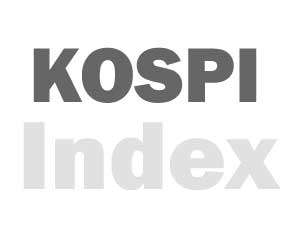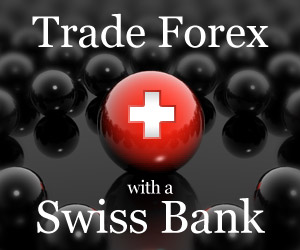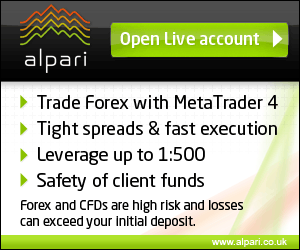KOSPI Index Live Real-Time Streaming Daily and Historical Chart (Line, Candlestick, Bar, P&F)
Live Real-Time streaming chart of Korean KOSPI Index with adjustable line type, time frame/period, and optional technical indicators is available here.
One Month/ Hourly Bar
KOSPI Index for Last Month
12 months/ Daily Line
KOSPI Index for Last 12 Months
5 Years/ Weekly Candle
KOSPI Index for Last 5 Years
Help - How to Use?
Read About How to Use Chart Module
Real-time streaming chart (KOSPI Index) can be customized. You can change the time period (1 minute, 10 minute, 1 hour, 1 day or 1 week), time frame (from 10 to 500 time periods), chart type (bar, candle, line, P&F) or change/add technical indicator (Volume, RSI, MACD, Stohastic, Momentum and others); just move your mouse over the chart and notice the Options button in the right top corner of the chart. Click on this button and then adapt the settings according to your needs in the drop menu. You can also Detach the chart in a separate window and zoom it or even make it full-screen.
Do you find this content useful? Like! Tweet! Recommend! Share!
About KOSPI Index
KOSPI, an acronym for the phrase Korea Composite Stock Price Index, although conceived on 4th January, 1980, was officially introduced in 1983 featuring a base value of 100. Having been based on lines similar to those of the American Dow Jones and S&P 500, the KOSPI represents the overall South Korean stock market index and was previously referred to as the Korea Stock Exchange or the Korea Exchange as well.
Prior to the establishment of KOSPI, stock trading in Korea took place through the KCSPI, the Korea Composite Stock Price Index which was similar in its style of functioning to the US-based Dow. The pictorial graph of this stock index reveals that after its introduction in 1983, the value of the KOSPI index never crossed the 1000 mark till it broke the barrier for the first time by closing above the 1000 mark in April, 1989. This was followed by a choppy spell after which the index once again touched its pinnacle in November, 1994, to gradually inch towards its bullish phase. The complete recovery of the index from the Asian financial crisis was finally evident when it recorded it recorded its largest intra day percentage gain on 17th June, 1998.
As reflected by the chart, the turn of the century augured well for this relatively new index as it repeated its peak performance yet again in January, 2000, but this joy proved to be short lived as its curve nose-dived to the largest intra day percentage loss in response to the 9/11 terrorist attacks on 12th September, 2001. The intermittent surges and plunges continued with the index closing once above the 1000 mark on 28th February, 2005, and falling below it in April the same year. A historic landmark as revealed in the chart occurred when the KOSPI index closed above the 2000 level for the first time on 24th July, 2007. Since then it has adopted its zigzag nature once again and many of its movements are influenced by the movement of the American Dow Jones index.

The plunge in the value curve of KOSPI in the beginning of the year 2009 was explained as being the outcome of the poor performance of some of the leading companies of the exchange like Samsung and LG Electronics. This fall triggered the beginning of a bearish phase for the exchange wherein the value of most of the stocks tumbled with only a few exceptions which went against the trend.
The calculation methodology adopted by KOSPI index is based on the market capitalization of its more than 700 components and its performance can be forecasted over three different periods namely short term, mid term and long term through the application of forecast accuracy metrics which compensate for the errors in forecasting. The value of a particular stock listed on the index is calculated by taking the market capitalization as the numerator and the base value of market capitalization as recorded on 4th January, 1980, as the denominator. Therefore, the value of the current index is arrived at by multiplying the current value of the components by 100 and dividing it by the base value.
While the KOSPI index represents the aggregate stock market value, it is further categorized into a number of indices, the foremost among them being the KOSPI 200, the KOSPI 100 and the KOSPI 50. Among these, it is the KOSPI 200 which is the most important as it features the names of 200 biggest companies which account for more than 70% of the entire market value of KOSPI. The significance of this particular index can also be gauged by the fact that since it is listed with the futures as well as the options market, it belongs to the list of indexes which are traded most actively on a global scale. Since its introduction on 3rd January, 1990, its movement has been a constant shadow of the KOSPI index and while it touched its lowest point on 16th June, 1998, its high point occurred on 24th April, 2007.
Some of the other indexes listed under KOSPI are the large-cap, midcap and small-cap indices, KOGI as in the corporate governance index, KODI as in the dividend index, the industrial indices and the KRX 100. The most noteworthy among these is the KRX 100 index as it has been launched with the intention of eventually replacing the KOSPI 200 index and features 100 companies listed with the Korean Stock Exchange.
Real-Time Quotes and Charts Navigator
Are you interested in real-time streaming charts for other indices, stocks, currencies, commodities and other asset classes? Just click on the available links within each asset class...
Select From Real-Time Quotes & Charts Navigator
U.S. Indices: Dow Jones | S&P 500 | Nasdaq 100 | Nasdaq Composite
Europe Indices: Euro Stoxx 50 | FTSE 100 | DAX 30 | CAC 40
Asia Indices: Nikkei 225 | Hang Seng | KOSPI
Currencies: EUR/USD | GBP/USD | USD/CHF | USD/CAD | AUD/USD | NZD/USD
Commodities: Gold | Silver | Light Crude | Brent Crude
Overviews: Custom Stocks Chart | Intraday Overview | Historical Overview | FX Majors
Do you find this content useful? Like! Tweet! Recommend! Share!
Related Articles
ETF Trading Strategies Revealed - Fresh Signals and Ideas Daily
If you are looking for ETF trading strategies, this is the place to be. We provide investing ideas for the most popular ETFs in different categories.
Zecco Trading Broker Review 2012 - Pros, Cons, Features, Ratings
Zecco Trading is an online stock broker that offers low cost stock trading, discount options pricing and a powerful and easy-to-use trading platform.
Written by: Goran Dolenc
Back from KOSPI Index to Stock Market Today
Back from KOSPI Index to Best Online Trading Site Home Page










